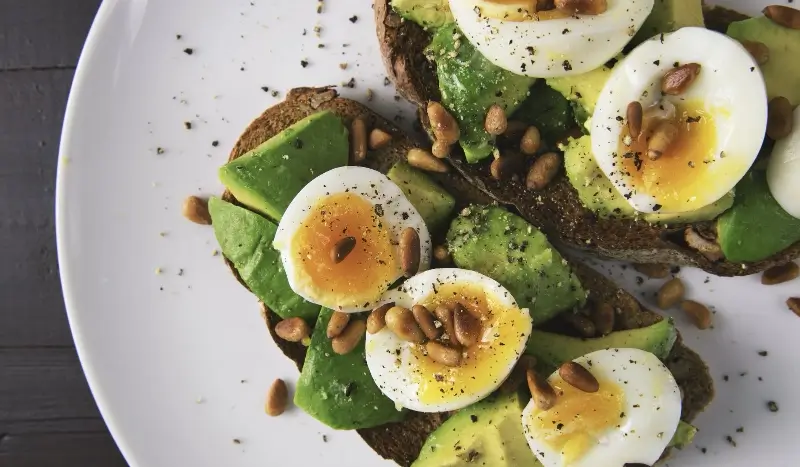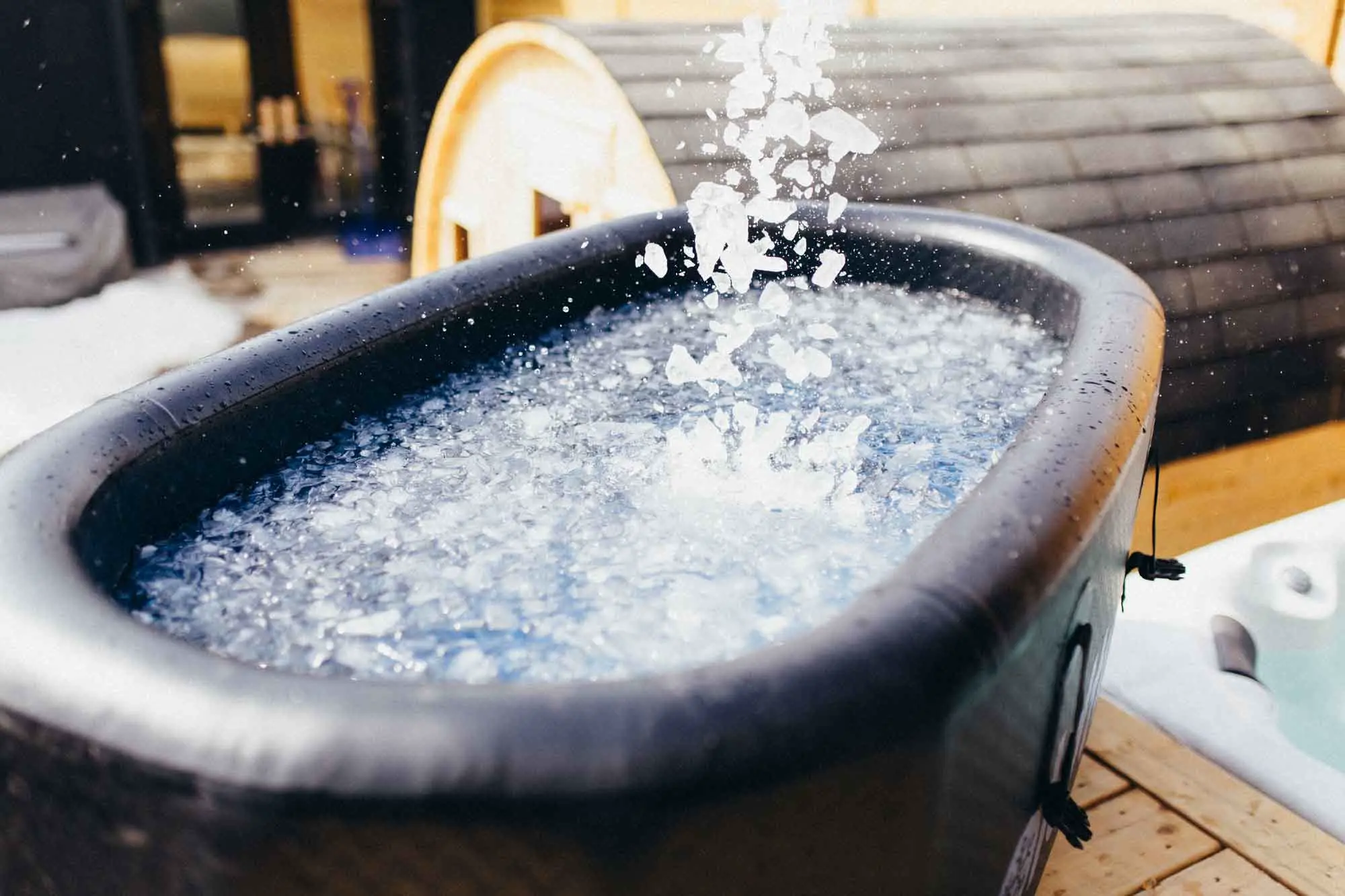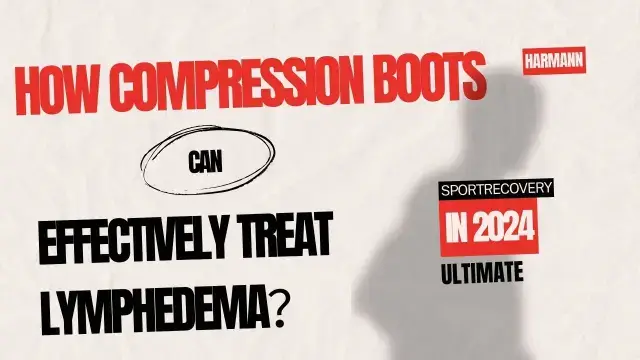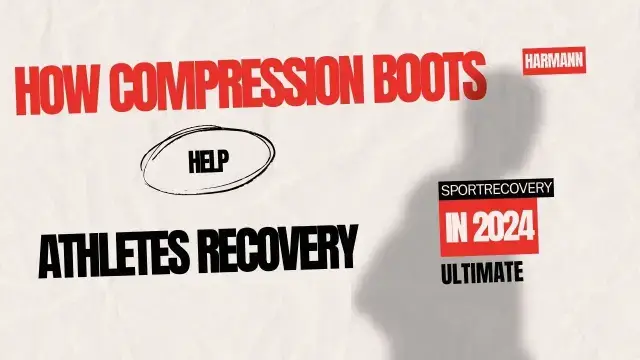Recupero rapido: 19 Modi per accelerare la riabilitazione fisica
Recupero rapido: 19 Modi per accelerare la riabilitazione fisica
introduzione
From the foundational beats of hydration and nutrition to the soothing notes of stretching and bathing, each element contributes to a harmonious combination of physical recovery.
- Hydration: Maintain Optimal Fluid Intake
- Nutrient-Rich Diet: Balancing Nutrition for Enhanced Recovery
- Protein Intake: Supporting Muscle Repair
- Post-Workout Snack: Boosting Recovery Rates
- Stretching: Improving Flexibility, Minimizing Muscle Soreness
- Foam Rolling: Promoting Muscle Relaxation, Preventing Stiffness
- Ice Bath or Cold Compress: Alleviating Inflammation and Muscle Soreness
- Epsom Salt Bath: Easing Muscle Tension
- Adequate Sleep: Enhancing Overall Recovery and Well-being
- Rest Days: Preventing Overtraining
- Compression Garments: Improving Blood Circulation, Reducing Soreness
- Massage Therapy: Enhancing Muscle Relaxation, Improving Blood Flow
- Anti-Inflammatory Foods: Consuming Omega-3 Rich Foods
- Turmeric and Ginger: Incorporating Natural Anti-Inflammatory Herbs
- Proper Warm-up and Cool Down: Preparing and Concluding Workouts Effectively
- Stay Active on Rest Days: Engaging in Low-Intensity Activities
- Maintain Hygiene: Preventing Skin Infections, Promoting Overall Health
- Mind-Body Techniques: Meditation and Deep Breathing for Stress Reduction and Overall Recovery
- Consistency: Regular Exercise for Reduced Muscle Soreness Over Time
1. Hydration: Maintain Optimal Fluid Intake

In the intricate dance of exercise rehabilitation, hydration takes center stage as a fundamental pillar, orchestrating the body’s recovery process. Let’s delve into the art of maintaining optimal fluid intake, a vital symphony for supporting performance and revitalizing muscles post-exercise.
Water Harmony: A Prelude to Recovery
Picture hydration as the overture to a successful recovery. Optimal fluid intake is the linchpin, indispensable for aiding in the repair and rebuilding of muscles fatigued by physical activity. As you engage in the rhythm of exercise, your body releases fluids through sweat, potentially leading to dehydration if not promptly replenished.
Dehydration Dangers: Navigating the Risks
Dehydration isn’t just a minor inconvenience; it’s a formidable adversary that can impair muscle function, deplete energy levels, and obstruct the body’s recovery prowess. To counteract this threat, the wisdom lies in a strategic approach to water consumption – before, during, and after workouts.
Pre-Hydration Ritual: Setting the Stage
Imagine pre-hydration as the ritual that primes your body for the physical performance ahead. By ensuring adequate fluid levels beforehand, you lay the foundation for a successful exercise endeavor. As the curtains rise, drinking water during exercise becomes a dynamic act, replenishing lost fluids and maintaining optimal hydration levels throughout the performance.
Post-Exercise Symphony: Nourishing the Body
The grand finale involves post-exercise hydration, a crucial act in replenishing fluid losses and supporting the intricate recovery process. Adequate hydration becomes the maestro, conducting nutrient transport to muscles, regulating body temperature, and orchestrating the flush-out of toxins accumulated during the vigorous exercise routine.
Electrolyte Elevation: The Perfect Cadence
In this hydration symphony, electrolyte-rich beverages emerge as the perfect cadence. Sodium, potassium, calcium, and magnesium, the unsung heroes, play pivotal roles in muscle function and nerve signaling. Enter electrolyte drinks or tablets, seamlessly replenishing these essential minerals lost through sweat during intense workouts.
Proper hydration isn’t just a necessity; it’s the key to a triumphant recovery. It not only propels faster recovery but also elevates overall performance by ensuring optimal physiological functions throughout the rehabilitation process. As you embark on your exercise rehabilitation journey, let hydration be your trusted companion, quenching your thirst for victory.
2. Nutrient-Rich Diet: Balancing Nutrition for Enhanced Recovery

In the realm of exercise rehabilitation, a nutrient-rich diet isn’t just a choice; it’s a game-changer. Let’s explore the crucial role of balanced nutrition in accelerating your recovery process and elevating your overall performance.
Nutrient Symphony: Building Blocks for Success
Imagine your body as a masterpiece, and nutrients as the brushstrokes that bring it to life. A nutrient-rich diet is the canvas, providing the essential building blocks crucial for muscle repair and growth. To kickstart this artistic process, one key player takes the stage – protein.
Protein Power: The Muscle Maestro
Protein isn’t just a nutrient; it’s the maestro orchestrating the symphony of muscle repair and synthesis. Picture your plate adorned with lean meats, poultry, fish, eggs, dairy products, legumes, and nuts – these are the musical notes that support your muscles during the rehabilitation phase. For a convenient encore, consider incorporating protein shakes or bars as post-workout snacks, providing a harmonious boost to your protein intake.
Carb Elevation: Sustaining Energy Levels
In this nutritional masterpiece, carbohydrates play a crucial role in replenishing depleted glycogen stores. Opt for complex carbohydrates – the whole grains, fruits, vegetables, and legumes – as your energy allies. They not only sustain energy levels throughout the day but also bring a chorus of vitamins, minerals, and fiber that contribute to your overall health and well-being.
Balancing Act: Tailoring Nutrition to Your Symphony
Your nutrient intake is a delicate balance, much like orchestrating a symphony. Each person’s nutritional needs are unique, influenced by factors such as age, gender, weight, activity level, and specific fitness goals. To ensure your nutritional score is perfectly tuned to your individual needs, consider consulting with a registered dietitian. They can help craft a personalized nutrition plan, ensuring you hit all the right notes for a successful recovery journey.
In the world of enhanced recovery, let your nutrient-rich diet be the masterpiece that propels you toward peak performance and swift rehabilitation success.
3. Protein Intake: Supporting Muscle Repair

Muscle Fuel: Unleashing the Power of Protein
As you embark on your exercise rehabilitation journey, don’t underestimate the superhero role of protein. It’s not just a nutrient; it’s the key player supporting muscle repair and growth, making it an absolute essential in your recovery playbook.
The Repair Crew: Amino Acids at Work
Picture this: as you engage in physical activity, your muscles undergo stress and damage. Enter protein – the repair crew armed with amino acids, the essential building blocks crucial for fixing and rebuilding muscle tissue. To supercharge your recovery, it’s recommended to up your protein intake, providing the necessary support for this intricate repair process.
Amino Acids Unleashed: The Protein Arsenal
Amino acids are the unsung heroes, and there are nine essential ones that your body can’t produce on its own. They must be recruited through your diet. Here’s where the protein-rich heavyweights come into play – meat, fish, poultry, eggs, dairy products, and plant-based wonders like quinoa and soybeans. These complete proteins offer a symphony of amino acids, ensuring your muscles get the full range needed for optimal recovery.
Post-Workout Protein Boost: The Rapid Repair Elixir
Timing is everything, especially when it comes to post-workout nutrition. Within the first 30 minutes to an hour after exercise, treat your muscles to a protein-packed feast. Whether it’s a whey protein shake or a protein bar, these convenient options are your secret weapons. They not only kickstart the muscle repair process but also replenish glycogen stores and promote muscle protein synthesis. It’s like delivering the perfect post-exercise fuel directly to where it’s needed most.
Daily Protein Power: Sustaining Muscle Growth
Don’t reserve your protein intake just for post-workout moments. Make it a daily mission. By prioritizing protein-rich foods or supplements throughout the day, especially after workouts, you’re ensuring a continuous supply of support for your muscles’ repair and growth processes. It’s the strategic move to fast-track your exercise rehabilitation journey.
In the grand symphony of recovery, let protein take center stage – your muscles will thank you with strength, resilience, and a faster path to rehabilitation success.
4. Post-Workout Snack: Boosting Recovery Rates
As you wrap up that intense workout session, one thing is certain – your body is ready for a superhero-level post-workout snack to kickstart recovery and muscle repair. Let’s dive into the world of delicious and nutritious choices that will have you feeling revitalized in no time.
The Power-Packed Smoothie: A Symphony of Flavors

Imagine sipping on a smoothie that not only tantalizes your taste buds but also turbocharges your recovery. Blend together Greek yogurt, berries, banana, and a scoop of protein powder for a concoction that’s as delicious as it is effective. Greek yogurt takes the lead, offering a protein-rich punch with essential amino acids vital for muscle repair. Meanwhile, the natural sugars from berries and banana swoop in to replenish glycogen stores, providing the perfect balance for your post-exercise recovery. Adding that scoop of protein powder? It’s the extra boost your muscles need. Convenient and nutrient-dense, this smoothie is your go-to for on-the-go post-workout satisfaction.
The Balanced Wrap: A Symphony of Macronutrients
If you’re craving something more substantial, picture this – a whole grain wrap filled with lean turkey or chicken slices, creamy avocado, and vibrant spinach. It’s not just a snack; it’s a balanced meal wrapped up and ready to go. Whole grains offer a sustained energy release, complemented by lean poultry providing high-quality protein essential for muscle recovery. Avocado brings in healthy fats for satiety and nutrient absorption, while spinach adds a dose of vitamins and minerals for overall health. This wrap isn’t just about satisfying your taste buds; it’s a strategic mix of macronutrients designed to support optimal recovery after an intense workout.
In the world of post-workout snacking, these options aren’t just delicious; they’re your allies in minimizing muscle soreness, reducing fatigue, and gearing up for your next fitness adventure. COSÌ, whether you’re sipping on a revitalizing smoothie or enjoying a balanced wrap, let your post-workout snack be as dynamic as your workout itself!
5. Stretching: Improving Flexibility, Minimizing Muscle Soreness

Picture our body as a finely tuned instrument, and stretching as the key to unlocking its full potential. It’s not just a routine; it’s a game-changer in your exercise rehabilitation journey. Let’s dive into the world of stretching, where flexibility meets muscle bliss.
Dynamic Stretching: A Prelude to Power
Before kick off workout symphony, consider dynamic stretching as the opening act. It’s like a dance party for your muscles – moving, grooving, and gradually gearing up for the main event. These dynamic moves not only prep your muscles for action but also get the blood flowing, reducing the risk of those sneaky muscle strains. It’s your secret weapon for a powerful warm-up that sets the stage for peak performance.
Static Stretching: Unwind and Elevate
Once the workout curtain falls, it’s time for the grand finale – static stretching. Think of it as a graceful cooldown, holding those stretches like a maestro. With each 15-30 second stretch, you’re not just reducing muscle tightness; you’re sculpting a masterpiece of agility. But here’s the trick – save static stretches for when your muscles are warm. Cold muscles might not appreciate the stretch, and we want to keep those muscles happy and injury-free.
PNF Stretching: Elevate Your Flexibility
Ora, let’s introduce the MVP – Proprioceptive Neuromuscular Facilitation (PNF) allungamento. It’s like the advanced level of stretching, involving muscle contracting and partner-assisted stretching with props like resistance bands. This isn’t just stretching; it’s a science-backed method that taps into neural pathways, enhancing flexibility gains like never before. Say goodbye to muscle soreness; PNF stretching reaches deep into those muscle territories conventional stretches might miss.
In your quest for athletic greatness, consider stretching not just a routine but a transformative journey. Whether it’s the lively dance of dynamic stretching, the graceful elegance of static stretches, or the advanced techniques of PNF stretching – each move is a step towards unlocking your body’s true potential. COSÌ, stretch your limits, embrace the flexibility, and watch your athletic prowess soar to new heights!
6. Foam Rolling: Promoting Muscle Relaxation, Preventing Stiffness
In the realm of exercise rehabilitation, foam rolling emerges as a silent hero, wielding the power to promote muscle relaxation and ward off the unwelcome stiffness that often follows intense workouts. Let’s unravel the wonders of this self-myofascial release technique that can transform your recovery process.
The Foam Rolling Ballet: Easing Tension and Enhancing Circulation
Imagine foam rolling as a graceful ballet for your muscles, where a foam roller becomes the dancer, applying gentle pressure to specific points on your body. This therapeutic dance aims to release tension and choreograph an improved circulation performance. Tight muscles, adhesions, and knots take center stage, and foam rolling becomes the maestro that brings flexibility, reduced soreness, and enhanced recovery to the forefront.
Targeting Tension: Unraveling Tightness and Knots
Physical activity and intense workouts can leave your muscles tight and knotted, victims of repetitive movements or overuse. Enter foam rolling – the targeted technique that gently applies pressure along muscle fibers, breaking up adhesions and releasing tension. It’s a transformative process that not only promotes muscle relaxation but also unleashes improved blood flow, a key player in reducing inflammation and preventing stiffness.
Post-Workout Rendezvous: A Few Minutes for Maximum Impact
As the final act of your exercise routine unfolds, incorporating foam rolling becomes a crucial rendezvous for your muscles. Spending just a few minutes targeting key muscle groups with a foam roller can be a game-changer, preventing the stiffness that often sneaks in after strenuous exercise.
Beyond Stiffness: Unlocking Performance Potential
Regular foam rolling sessions unlock a broader spectrum of advantages, including improved joint range of motion, enhanced muscle elasticity, and the alleviation of muscular imbalances that.
As you roll through the motions of exercise rehabilitation, let foam rolling be your trusted partner, guiding your muscles towards relaxation, resilience, and a performance potential that knows no bounds.
7. Ice Bath or Cold Compress: Alleviating Inflammation and Muscle Soreness

In the realm of exercise recovery, the age-old remedies of bagni di ghiaccio and cold compresses emerge as the cool champions, offering relief from inflammation and muscle soreness. Let’s dive into the icy embrace of these therapies that athletes and fitness enthusiasts swear by for post-exercise recovery.
Cold Symphony: Constricting Vessels, Easing Inflammation
Imagine the cool notes of a symphony as cold therapy takes the stage. Ice baths and cold compresses work their magic by constricting blood vessels, reducing blood flow to the affected area, and orchestrating a decrease in swelling and inflammation. It’s a therapeutic melody that athletes turn to after intense workouts.
Ice Baths: Immersion in Recovery
In the world of recovery, ice baths steal the spotlight. Picture immersing yourself in cold water, typically ranging from 10 A 15 gradi Celsius, for 10-15 minuti. The sudden drop in temperature induces a symphony of effects – blood vessels constrict, waste products flush out, metabolic activity slows down, and inflammation takes a backseat. Ice baths not only tackle inflammation and swelling but also play a dual role by promoting enhanced circulation once out of the water.
Direct Relief: Cold Compress Magic
For those who prefer a more targeted approach, the cold compress takes center stage. It’s a simple yet effective method – wrap ice or a cold pack in a towel and gently press it against the affected area for 15-20 minuti. The cold temperature acts as a temporary numbing agent, reducing pain signals to the brain and providing immediate relief. Vasoconstriction steps in, minimizing tissue damage and limiting swelling, all in a compact, cold package.
Challenging the Cold: Immersive Benefits
While the idea of an ice bath might send shivers down some spines, the benefits it offers are unparalleled. Beyond inflammation and swelling reduction, ice baths promote vasoconstriction followed by vasodilation once out of the water, enhancing circulation throughout the body. This increased blood flow acts like a revitalizing current, flushing out metabolic waste products, including lactic acid, accumulated during exercise-induced muscle fatigue.
Accelerating Recovery: The Icy Elixir
Incorporating ice baths or cold compress therapy into your post-workout routine isn’t just about embracing the chill – it’s about unlocking the icy elixir of faster healing. These therapies work in tandem, promoting swift recovery by healing micro-tears in muscles, reducing overall soreness, and providing a cool, comforting embrace after the rigors of exercise.
As you venture into the world of exercise rehabilitation, let the chill of ice baths and cold compresses be your allies, offering a symphony of relief and an accelerated path to recovery.
8. Epsom Salt Bath: Easing Muscle Tension

In the serene world of post-workout recovery, Epsom salt baths emerge as a time-honored remedy, a natural oasis for easing muscle tension and promoting pure relaxation. Let’s delve into the therapeutic waters of Epsom salt, where magnesium sulfate takes center stage, offering a soothing balm for sore muscles and a respite from inflammation.
Magnesium Magic: The Elixir of Muscle Soothing
Its main component, magnesium sulfate, holding the secret to muscle tranquility. Dissolved in warm water, Epsom salt becomes a gateway for magnesium to gracefully seep into the skin, penetrating deep into the muscles to provide unparalleled relief. It’s a post-workout recovery companion that deserves a prime spot in your routine.
Magnesium’s Crucial Role: Regulating, Relaxing, Replenishing
Magnesium, the silent maestro, plays a crucial role in the symphony of muscle function and relaxation. It regulates muscle contractions and fuels energy production within cells. After intense exercise depletes the body’s magnesium stores, muscles may rebel with cramps and tension. Enter the Epsom salt bath – a topical replenishment of magnesium levels, a gesture of gratitude to your muscles, promoting relaxation and banishing stiffness.
Circulation Serenity: A Warm Water Ballet
Beyond muscle-relaxing prowess, Epsom salt baths choreograph a ballet of improved circulation throughout the body. Warm water, infused with the magic of Epsom salt, gracefully dilates blood vessels, paving the way for enhanced blood flow to muscles and joints. This balletic circulation not only delivers vital nutrients and oxygen to tired muscles but also acts as a cleansing current, removing waste products that linger, contributing to soreness and inflammation.
Recovery Ritual: Enhancing Muscle Health
Incorporating regular Epsom salt baths into your recovery ritual isn’t just about soaking – it’s a holistic embrace of muscle health. This therapeutic soak goes beyond the surface, enhancing your body’s innate ability to recover effectively after exercise. Whether it’s the aftermath of a strenuous workout or the need for muscle rejuvenation, Epsom salt baths stand as a beacon of serenity, inviting you to surrender to the healing waters.
As you embark on your recovery journey, let the calming embrace of Epsom salt baths be your sanctuary, a sanctuary where muscle tension dissipates, and relaxation reigns supreme.
9. Adequate Sleep: Enhancing Overall Recovery and Well-being

Adequate sleep will always play an important part in the intricate system of exercise rehabilitation. This indispensable component plays a pivotal role in elevating overall recovery and nurturing well-being for individuals navigating the path of exercise rehabilitation. Let’s uncover the profound impact that quality sleep holds in this symphony of recovery.
Nocturnal Repairs: The Crucial Role of Quality Sleep
Adequate sleep isn’t merely a luxury; it’s a necessity for the body to orchestrate the repair and rebuilding of tissues stressed during workouts. In the hushed moments of deep sleep, the body unveils its secret weapon – the release of growth hormone, a linchpin for muscle repair and growth. A shortfall in sleep can diminish this vital hormone’s production, becoming a stumbling block in the recovery process.
Immune Harmony: Sleep as a Shield Against Disease
Lack of sleep impairs the body’s immune function, making individuals more susceptible to illnesses that may hinder the recovery process. Like a shield, adequate sleep strengthens the immune system and ensures that it fights off obstacles that may hinder the healing process.
Cognitive Renewal: A Well-Rested Mind’s Brilliance
When individuals indulge in restful slumber, mental clarity and focus during workouts ascend. This clarity becomes the guiding light, enabling more effective and safe exercise performances. Conversely, sleep deprivation dims the mind’s brilliance, impairing decision-making and coordination, elevating the risk of injuries during exercise.
Hormonal Harmony: Balancing Cortisol and Muscle Recovery
Sleep isn’t just a reprieve for the mind; it’s a hormonal harmony for the body. Lack of sleep elevates stress hormones like cortisol, acting as a hindrance to muscle recovery and fostering inflammation. Quality sleep, on the other hand, establishes a serene hormonal balance, contributing to a conducive environment for successful rehabilitation outcomes.
Snooze Strategies: Crafting a Restorative Night
To harness the power of sleep in the exercise rehabilitation journey, strategic measures can be adopted. Establishing a consistent bedtime routine, marked by relaxing activities such as reading or a warm bath, signals the body that it’s time to surrender to rest. Crafting a comfortable sleeping environment, free from light and noise disruptions, becomes the stage for deeper sleep cycles essential for recovery.
Caffeine Curfew and Ambient Comfort: Simple Keys to Sleep Optimization
Refining sleep quality involves adhering to a caffeine curfew, avoiding stimulants close to bedtime. Inoltre, maintaining a cool room temperature becomes a subtle yet effective ally in optimizing restorative sleep patterns. These simple yet impactful strategies contribute to overall well-being and set the stage for triumphant rehabilitation outcomes.
As individuals engage in exercise rehabilitation, let the nocturnal symphony of adequate sleep be their ally, guiding them towards rejuvenation, resilience, and a flourishing sense of well-being.
10. Rest Days: Preventing Overtraining
The rest days emerge as a crucial note, a pause that prevents overtraining and cultivates the optimal environment for recovery. Let’s explore the profound impact of these interludes, safeguarding against the perils of excessive physical stress and promoting a harmonious journey of fitness.
Overtraining: The Pitfall of Excessive Strain
Picture overtraining as a treacherous path, where the body wearies under the weight of excessive physical stress, a journey leading to decreased performance, heightened injury risks, and an overarching sense of fatigue. Rest days stand as the fortification against this peril, providing the essential time for the body to rejuvenate and adapt to the rigors of exercise.
Strategic Pause: The Power of Scheduled Rest Days
Where the body wearies under the weight of excessive physical stress, a journey leading to decreased performance, heightened injury risks, and an overarching sense of fatigue. Rest days stand as the fortification against this peril, providing the essential time for the body to rejuvenate and adapt to the rigors of exercise.
Active Recovery: Nourishing Muscles Without Strain
On rest days, the spotlight shifts to activities that nurture rather than strain. Low-impact exercises like walking, yoga, or swimming take center stage, improving blood flow to muscles and joints without burdening the body. These gentle activities alleviate muscle soreness, enhance flexibility, and promote mobility, ensuring a dance of restoration.
Balancing Act: Physical and Mental Harmony on Rest Days
Rest isn’t just a physical endeavor; it’s a mental retreat as well. Taking time for cherished hobbies, embracing moments with loved ones, or indulging in mindfulness practices like meditation and deep breathing becomes a vital part of the rest day repertoire. This delicate balance between physical rejuvenation and mental repose not only prevents overtraining but paves the way for enduring success in your fitness journey.
11. Compression garments: Improve blood circulation and reduce soreness

In the realm of sports and athletic rehabilitation, compression garments, exemplified by the air compression boots, stand as revered instruments known for their prowess in enhancing performance and expediting recovery. Let’s unravel the marvel of these specialized garments, designed to embrace the body with gentle pressure, orchestrating a dance of improved blood circulation and diminished soreness.
Graded Precision: Guiding Blood with Finesse
At the heart of stivali di compressione lies graded compression, fostering superior circulation throughout the muscles. This rhythmic pressure not only propels oxygen and nutrients efficiently to muscle tissue but also serves as a diligent messenger, escorting away metabolic byproducts like lactic acid that contribute to soreness and fatigue.
Soothing muscles: harmonizing oscillations to minimize injury
Compression boots play a symphony of sound during exercise, reducing muscle oscillations and minimizing post-exercise injury and soreness. By wrapping muscles and joints in a supportive embrace, these garments stabilize movement patterns and inhibit excessive stress on vulnerable areas. This acts as a protective garment, which is especially important for those recovering from injury or suffering from chronic pain, both for strengthening and peace of mind during exercise.
With the maturity of air compression technology, compression garments have become an indispensable piece of professional recovery equipment to speed up sports recovery and further enhance recovery efficiency.
12. Massage Therapy: Enhancing Muscle Relaxation, Improving Blood Flow

In the realm of exercise rehabilitation, massage therapy emerges as a treasured artisan, skillfully crafting relaxation and expediting recovery. Through the adept manipulation of soft tissues—muscles, tendons, and ligaments—massage therapists weave a tapestry of relief, releasing tension and tightness that linger after the rigors of physical exertion.
Targeted massage: a more relaxing treat
Massage therapy unveils its precision as therapists target specific muscle groups, unraveling overworked or strained areas. In this nuanced approach, trigger points and knots, the architects of muscle imbalances and limited range of motion, are delicately released. Pain dissipates, muscle function is restored, and the groundwork is laid for preventing potential injuries in the future.
Regular massage sessions become architects of flexibility and joint mobility. Athletes find themselves liberated, able to perform at their peak without the constraints of physical restrictions. It becomes a journey of rediscovering movement, a key to unlocking full potential and sustaining peak performance.
Increase blood flow
This increased blood flow not only helps flush out toxins that may have built up during your workout but also delivers essential nutrients to aid in muscle repair and recovery. By improving circulation, massage therapy can expedite the healing process of any microtears or strains that may have occurred during exercise.
13. Anti-Inflammatory Foods: Consuming Omega-3 Rich Foods

Omega-3 fatty acids emerge as virtuosos, wielding powerful anti-inflammatory properties that echo through the corridors of exercise recovery. Let’s embark on a journey of culinary enlightenment, exploring the bountiful offerings of these essential nutrients that hold the key to expediting the restoration of the body.
Marine Elegance: Fatty Fish Extravaganza
Primo, fatty fish—salmon, mackerel, and sardines—a triumphant trio brimming with EPA (eicosapentaenoic acid) and DHA (docosahexaenoic acid), the maestros of anti-inflammatory effects. Through a delicate dance, these omega-3 fatty acids choreograph the body’s inflammatory response, orchestrating a reduction in pro-inflammatory molecules.
Plant-Based Refrain: Seeds of Transformation
The botanical realm contributes to our omega-3 opus with flaxseeds, chia seeds, walnuts, and hemp seeds—a quartet of plant-based virtuosos. Here, alpha-linolenic acid (ALA) takes center stage, a precursor that transforms into EPA and DHA, albeit to a limited extent. Diversifying your diet with these seeds ensures a symphony of omega-3 fatty acids, essential for supporting the body’s recovery post-exercise.
Melody of Recovery: Soothing Soreness and Inflammation
Studies compose a reassuring melody, revealing that the consumption of omega-3 rich foods is a balm for muscle soreness and inflammation post-exercise. By making these nutrient-rich foods a regular cadence in your meals or snacks, you conduct a potential enhancement of your body’s recovery prowess after intense workouts.
The resonance of omega-3s extends far beyond the realms of exercise recovery, weaving a healthful sonata that reduces the risk of chronic diseases entwined with inflammation. Heart disease and arthritis, among the orchestration of ailments, find a counterpoint in the anti-inflammatory effects of these essential fatty acids.
14. Turmeric and Ginger: Incorporating Natural Anti-Inflammatory Herbs

Turmeric and ginger are two potent natural herbs that have long been revered for their anti-inflammatory properties and numerous health benefits. Turmeric contains a compound called curcumin, which is known for its strong anti-inflammatory effects.
Curcumin’s Crescendo: Turmeric’s Anti-Inflammatory Overture
At the heart of turmeric lies curcumin, a virtuoso compound renowned for its robust anti-inflammatory effects. It can orchestrate a reduction in body inflammation, offering respite to weary muscles and fostering a swifter recovery post-exercise. Embrace turmeric’s versatility by infusing it into post-workout smoothies, culinary creations, or the comforting notes of turmeric tea. For those seeking a concentrated dose, turmeric supplements provide a convenient symphony of curcumin benefits.
Ginger’s Spice Sonata: Soothing Inflammation with Zest
Ginger, a companion in this herbal ensemble, brings forth gingerol—a dynamic compound celebrated for its anti-inflammatory and antioxidant prowess. Grate fresh ginger into stir-fries, soups, or teas for a zesty infusion that transcends flavor, contributing to the reduction of muscle soreness and inflammation. For a simpler cadence, ginger supplements offer an effortless means to incorporate this herb into your daily routine, ensuring its continual support in your exercise rehabilitation journey.
A Culinary Ballet: Incorporating Turmeric and Ginger
Infuse the culinary ballet of turmeric and ginger into your daily routine, not merely as healers of inflammation but as holistic wellness allies. Turmeric’s bioactive compounds, beyond their anti-inflammatory prowess, dance towards improved digestion, heightened immune function, and potential anti-cancer properties. Ginger, with its digestive embrace and anti-nausea grace, becomes a comforting partner offering relief from muscle pain.
By incorporating these natural herbs into your diet regularly as part of your exercise rehabilitation plan, you can tap into their potent anti-inflammatory properties while reaping the many other health benefits they have to offer. Whether enjoyed in culinary creations or consumed through supplements or teas, turmeric and ginger serve as valuable allies on your journey toward faster recovery post-exercise.
15. Proper Warm-up and Cool Down: Preparing and Concluding Workouts Effectively
Embarking on a workout without a proper warm-up is like starting a car in freezing weather without letting the engine heat up. A dynamic warm-up is your vehicle to prime your body for the exertion ahead. Picture it as a symphony tuning their instruments before the performance—essential for harmony.
To compose the perfect warm-up, replicate the movements you’ll embrace during your workout. If squats are on the agenda, kick off with bodyweight squats or lunges. Engaging multiple muscle groups in dynamic exercises not only readies your body but also enhances coordination and stability.
Flexibility training: letting the body let the flow
Integrating mobility exercises into your warm-up routine is akin to a ballet dancer preparing for a flawless performance. Movements like arm circles, leg swings, and shoulder rotations aren’t just graceful; they lubricate joints, boosting flexibility and reducing injury risks. Pay special attention to areas prone to tightness or injury, tailoring your warm-up to specific workout demands.
Progressive: Gradual reduction to rest
As your workout reaches its crescendo, don’t neglect the cool-down serenade. Just as a symphony gradually winds down to a gentle finish, your heart rate and blood pressure need a gradual return to baseline. Static stretches, the calming notes in this symphony, target major muscle groups, preventing stiffness and reducing post-exercise soreness.
Hold each stretch for 15-30 seconds, allowing improved blood flow to nurture fatigued muscles. This not only aids in immediate recovery but contributes to long-term flexibility and injury prevention. Much like the encore after a brilliant performance, a thoughtful cool down ensures your body remembers the harmonious melody of a well-executed workout.
16. Stay Active on Rest Days: Engaging in Low-Intensity Activities
On rest days, it is crucial to stay active through engaging in low-intensity activities. While the primary goal of a rest day is to allow your body to recover and repair from intense exercise, staying sedentary can actually hinder the recovery process. Low-intensity activities such as walking, gentle yoga, or light swimming can help improve blood flow and circulation throughout the body, aiding in the delivery of essential nutrients and oxygen to muscles for faster recovery.
These activities also help prevent stiffness by promoting gentle movement without putting additional stress on muscles that are still healing. Engaging in low-intensity activities on rest days can also have a positive impact on your mental well-being.
Preventing Stiffness: Soften your body
Rest doesn’t mean stillness, low-intensity activities prevent stiffness by encouraging fluid movement without burdening muscles in recovery. A stroll, a dip in the pool, or a graceful yoga sequence—these are the gentle pirouettes that keep your body in rhythmic harmony.
Consistency in the Choreography: Balancing Act for Long-Term Fitness
Consistency is the choreography of fitness. Low-intensity activities are the graceful intermezzo that sustains the rhythm between intense workouts. This balanced dance ensures that your body remains connected, creating a mosaic of continuous physical activity crucial for enduring health benefits.
Low-intensity activities are the bridge that connects intense workout crescendos. They delicately carry you from one high-energy performance to the next, ensuring your body stays engaged without overwhelming itself during recovery. This nuanced approach accelerates rehabilitation and establishes the groundwork for sustainable fitness habits.
17. Maintain Hygiene: Preventing Skin Infections, Promoting Overall Health
In the realm of exercise rehabilitation, the conductor ensuring the harmonious melody of well-being is proper hygiene. Sweating, the natural overture to exertion, creates a stage for bacterial crescendo. To counter this, showering post-workout becomes the cleansing refrain that washes away the sweat, dirt, and bacteria lingering on the skin’s surface.
Antimicrobial Aria: Soap as the Cleansing Cadence
To enhance this cleansing melody, the use of antimicrobial soap becomes the powerful aria. It acts as the soprano, eliminating harmful bacteria, and elevating the overall cleansing performance. This duet of shower and soap orchestrates a symphony of purity on your skin.
Disinfectant Interlude: Sanitizing Gym Equipment
Our symphony extends beyond the body to the instruments of exercise. Gym equipment, the percussion section of physical activity, needs its disinfectant interlude. Regularly cleaning yoga mats, weights, and resistance bands is the duty of this section, preventing the disharmony caused by germs that may lurk on shared equipment.
Internal Hygiene Overture: Staying Hydrated
In addition to external hygiene practices, it is also crucial to pay attention to internal hygiene by staying hydrated throughout the day. Adequate hydration helps flush out toxins from the body through urine and sweat, reducing the likelihood of bacterial overgrowth on the skin.
Combining good external hygiene habits with proper hydration can significantly contribute to preventing skin infections and promoting optimal health during exercise rehabilitation.
18. Mind-Body Techniques: Meditation and Deep Breathing for Stress Reduction and Overall Recovery

When it comes to speeding up your exercise recovery, don’t underestimate the power of mind-body techniques like meditation and deep breathing. These practices not only help reduce stress but also play a significant role in promoting overall recovery and well-being. Meditation is a powerful tool that can help calm your mind and relax your body after a strenuous workout.
Deep Breathing: A Symphony of Oxygenation
By taking just a few minutes each day to sit quietly and focus on your breath or a calming mantra, you can activate the body’s relaxation response. By engaging in slow, deep breaths that fill your lungs completely, you can increase oxygen flow to your muscles and tissues. This helps flush out toxins and metabolic byproducts that accumulate during intense exercise, reducing muscle soreness and fatigue.
Endorphins: Boosting Happiness
Deep breathing also triggers the release of endorphins – the body’s natural painkillers – which can further aid in relaxation and promote feelings of well-being. Incorporating meditation and deep breathing into your post-workout routine can have profound effects on both your physical and mental health.
Not only do these practices enhance recovery by reducing stress levels, but they also improve sleep quality, immune function, and overall resilience to future workouts. So take some time each day to quiet your mind, focus on your breath, and nurture yourself from within – your body will thank you for it with faster healing times and better performance in the long run.
19. Consistency: Regular Exercise for Reduced Muscle Soreness Over Time
Consistency is key to effective exercise rehabilitation. Regular physical activity strengthens muscles, enhances endurance, E, crucially, reduces muscle soreness over time. A consistent workout routine allows your body to adapt, making muscles more efficient and minimizing post-exercise discomfort. Improved blood circulation from regular exercise delivers vital nutrients, oxygen, and speeds up the removal of waste products, aiding in faster recovery. Consistency regulates inflammatory responses, leading to less inflammation and quicker recovery. Moreover, a steady exercise regimen helps prevent injuries, ensuring long-term success in managing muscle soreness. This commitment not only builds physical resilience but also nurtures mental discipline for optimal rehabilitation results.
Conclusion
In the symphony of exercise rehabilitation, each strategy plays a crucial note, contributing to the overall composition of recovery and well-being. As we conclude this virtuoso performance, it’s evident that the harmonious integration of these 19 strategies orchestrates a symphony that significantly accelerates exercise rehabilitation and enhances overall recovery.
Optimizing the Body’s Orchestra: Key Strategies in Review
Hydration, Nutrition, and Protein Intake: The foundational melodies that provide essential building blocks for muscle repair and growth.
Stretching, Rolling, and Baths: Movements that compose the fluidity in muscle flexibility, alleviating soreness, and promoting relaxation.
Sleep and Rest Days: The essential interludes allowing the body to rest, repair, and adapt to the symphony of physical demands.
Compression, Massage, and Anti-Inflammatory Foods: Harmonies that reduce inflammation, support recovery, and provide a holistic approach to healing.
Warm-up and Cool Down: The prelude and finale that prevent injuries and contribute to flexibility, ensuring a seamless transition into and out of physical activity.
Stay Active on Rest Days: The gentle notes that maintain circulation and consistency without overwhelming the recovering body.
Consistency: The Resounding Chorus
Throughout this composition, one resounding chorus echoes – consistency. Like a persistent beat, these practices must be embraced over time to unlock their full potential. The repetition of these recovery strategies, day after day, creates a rhythm that accelerates rehabilitation and solidifies a path toward improved fitness and vitality.
Holistic Wellness: A Symphony of Mind and Body
The harmony extends beyond the physical – encompassing mind and spirit. Mind-body techniques like meditation and deep breathing become the soulful undertones, enhancing the holistic approach to well-being. It’s not just about recovering the body; it’s about rejuvenating the entire self.
Empowerment: The Anthem of Health Journey
As the final note lingers, it leaves behind a sense of empowerment. Each strategy embraced is a note struck in the anthem of one’s health journey. Taking charge of recovery fosters not just faster recuperation but a deep sense of control over one’s well-being. It’s a journey towards improved fitness, vitality, and the resonating melody of a life well-lived.
Vestibulum ante ipsum
You also want to know these…
Vestibulum ante ipsum
Recupero rapido: 19 Modi per accelerare la riabilitazione fisica
introduzione
From the foundational beats of hydration and nutrition to the soothing notes of stretching and bathing, each element contributes to a harmonious combination of physical recovery.
- Hydration: Maintain Optimal Fluid Intake
- Nutrient-Rich Diet: Balancing Nutrition for Enhanced Recovery
- Protein Intake: Supporting Muscle Repair
- Post-Workout Snack: Boosting Recovery Rates
- Stretching: Improving Flexibility, Minimizing Muscle Soreness
- Foam Rolling: Promoting Muscle Relaxation, Preventing Stiffness
- Ice Bath or Cold Compress: Alleviating Inflammation and Muscle Soreness
- Epsom Salt Bath: Easing Muscle Tension
- Adequate Sleep: Enhancing Overall Recovery and Well-being
- Rest Days: Preventing Overtraining
- Compression Garments: Improving Blood Circulation, Reducing Soreness
- Massage Therapy: Enhancing Muscle Relaxation, Improving Blood Flow
- Anti-Inflammatory Foods: Consuming Omega-3 Rich Foods
- Turmeric and Ginger: Incorporating Natural Anti-Inflammatory Herbs
- Proper Warm-up and Cool Down: Preparing and Concluding Workouts Effectively
- Stay Active on Rest Days: Engaging in Low-Intensity Activities
- Maintain Hygiene: Preventing Skin Infections, Promoting Overall Health
- Mind-Body Techniques: Meditation and Deep Breathing for Stress Reduction and Overall Recovery
- Consistency: Regular Exercise for Reduced Muscle Soreness Over Time
1. Hydration: Maintain Optimal Fluid Intake

In the intricate dance of exercise rehabilitation, hydration takes center stage as a fundamental pillar, orchestrating the body’s recovery process. Let’s delve into the art of maintaining optimal fluid intake, a vital symphony for supporting performance and revitalizing muscles post-exercise.
Water Harmony: A Prelude to Recovery
Picture hydration as the overture to a successful recovery. Optimal fluid intake is the linchpin, indispensable for aiding in the repair and rebuilding of muscles fatigued by physical activity. As you engage in the rhythm of exercise, your body releases fluids through sweat, potentially leading to dehydration if not promptly replenished.
Dehydration Dangers: Navigating the Risks
Dehydration isn’t just a minor inconvenience; it’s a formidable adversary that can impair muscle function, deplete energy levels, and obstruct the body’s recovery prowess. To counteract this threat, the wisdom lies in a strategic approach to water consumption – before, during, and after workouts.
Pre-Hydration Ritual: Setting the Stage
Imagine pre-hydration as the ritual that primes your body for the physical performance ahead. By ensuring adequate fluid levels beforehand, you lay the foundation for a successful exercise endeavor. As the curtains rise, drinking water during exercise becomes a dynamic act, replenishing lost fluids and maintaining optimal hydration levels throughout the performance.
Post-Exercise Symphony: Nourishing the Body
The grand finale involves post-exercise hydration, a crucial act in replenishing fluid losses and supporting the intricate recovery process. Adequate hydration becomes the maestro, conducting nutrient transport to muscles, regulating body temperature, and orchestrating the flush-out of toxins accumulated during the vigorous exercise routine.
Electrolyte Elevation: The Perfect Cadence
In this hydration symphony, electrolyte-rich beverages emerge as the perfect cadence. Sodium, potassium, calcium, and magnesium, the unsung heroes, play pivotal roles in muscle function and nerve signaling. Enter electrolyte drinks or tablets, seamlessly replenishing these essential minerals lost through sweat during intense workouts.
Proper hydration isn’t just a necessity; it’s the key to a triumphant recovery. It not only propels faster recovery but also elevates overall performance by ensuring optimal physiological functions throughout the rehabilitation process. As you embark on your exercise rehabilitation journey, let hydration be your trusted companion, quenching your thirst for victory.
2. Nutrient-Rich Diet: Balancing Nutrition for Enhanced Recovery

In the realm of exercise rehabilitation, a nutrient-rich diet isn’t just a choice; it’s a game-changer. Let’s explore the crucial role of balanced nutrition in accelerating your recovery process and elevating your overall performance.
Nutrient Symphony: Building Blocks for Success
Imagine your body as a masterpiece, and nutrients as the brushstrokes that bring it to life. A nutrient-rich diet is the canvas, providing the essential building blocks crucial for muscle repair and growth. To kickstart this artistic process, one key player takes the stage – protein.
Protein Power: The Muscle Maestro
Protein isn’t just a nutrient; it’s the maestro orchestrating the symphony of muscle repair and synthesis. Picture your plate adorned with lean meats, poultry, fish, eggs, dairy products, legumes, and nuts – these are the musical notes that support your muscles during the rehabilitation phase. For a convenient encore, consider incorporating protein shakes or bars as post-workout snacks, providing a harmonious boost to your protein intake.
Carb Elevation: Sustaining Energy Levels
In this nutritional masterpiece, carbohydrates play a crucial role in replenishing depleted glycogen stores. Opt for complex carbohydrates – the whole grains, fruits, vegetables, and legumes – as your energy allies. They not only sustain energy levels throughout the day but also bring a chorus of vitamins, minerals, and fiber that contribute to your overall health and well-being.
Balancing Act: Tailoring Nutrition to Your Symphony
Your nutrient intake is a delicate balance, much like orchestrating a symphony. Each person’s nutritional needs are unique, influenced by factors such as age, gender, weight, activity level, and specific fitness goals. To ensure your nutritional score is perfectly tuned to your individual needs, consider consulting with a registered dietitian. They can help craft a personalized nutrition plan, ensuring you hit all the right notes for a successful recovery journey.
In the world of enhanced recovery, let your nutrient-rich diet be the masterpiece that propels you toward peak performance and swift rehabilitation success.
3. Protein Intake: Supporting Muscle Repair

Muscle Fuel: Unleashing the Power of Protein
As you embark on your exercise rehabilitation journey, don’t underestimate the superhero role of protein. It’s not just a nutrient; it’s the key player supporting muscle repair and growth, making it an absolute essential in your recovery playbook.
The Repair Crew: Amino Acids at Work
Picture this: as you engage in physical activity, your muscles undergo stress and damage. Enter protein – the repair crew armed with amino acids, the essential building blocks crucial for fixing and rebuilding muscle tissue. To supercharge your recovery, it’s recommended to up your protein intake, providing the necessary support for this intricate repair process.
Amino Acids Unleashed: The Protein Arsenal
Amino acids are the unsung heroes, and there are nine essential ones that your body can’t produce on its own. They must be recruited through your diet. Here’s where the protein-rich heavyweights come into play – meat, fish, poultry, eggs, dairy products, and plant-based wonders like quinoa and soybeans. These complete proteins offer a symphony of amino acids, ensuring your muscles get the full range needed for optimal recovery.
Post-Workout Protein Boost: The Rapid Repair Elixir
Timing is everything, especially when it comes to post-workout nutrition. Within the first 30 minutes to an hour after exercise, treat your muscles to a protein-packed feast. Whether it’s a whey protein shake or a protein bar, these convenient options are your secret weapons. They not only kickstart the muscle repair process but also replenish glycogen stores and promote muscle protein synthesis. It’s like delivering the perfect post-exercise fuel directly to where it’s needed most.
Daily Protein Power: Sustaining Muscle Growth
Don’t reserve your protein intake just for post-workout moments. Make it a daily mission. By prioritizing protein-rich foods or supplements throughout the day, especially after workouts, you’re ensuring a continuous supply of support for your muscles’ repair and growth processes. It’s the strategic move to fast-track your exercise rehabilitation journey.
In the grand symphony of recovery, let protein take center stage – your muscles will thank you with strength, resilience, and a faster path to rehabilitation success.
4. Post-Workout Snack: Boosting Recovery Rates
As you wrap up that intense workout session, one thing is certain – your body is ready for a superhero-level post-workout snack to kickstart recovery and muscle repair. Let’s dive into the world of delicious and nutritious choices that will have you feeling revitalized in no time.
The Power-Packed Smoothie: A Symphony of Flavors

Imagine sipping on a smoothie that not only tantalizes your taste buds but also turbocharges your recovery. Blend together Greek yogurt, berries, banana, and a scoop of protein powder for a concoction that’s as delicious as it is effective. Greek yogurt takes the lead, offering a protein-rich punch with essential amino acids vital for muscle repair. Meanwhile, the natural sugars from berries and banana swoop in to replenish glycogen stores, providing the perfect balance for your post-exercise recovery. Adding that scoop of protein powder? It’s the extra boost your muscles need. Convenient and nutrient-dense, this smoothie is your go-to for on-the-go post-workout satisfaction.
The Balanced Wrap: A Symphony of Macronutrients
If you’re craving something more substantial, picture this – a whole grain wrap filled with lean turkey or chicken slices, creamy avocado, and vibrant spinach. It’s not just a snack; it’s a balanced meal wrapped up and ready to go. Whole grains offer a sustained energy release, complemented by lean poultry providing high-quality protein essential for muscle recovery. Avocado brings in healthy fats for satiety and nutrient absorption, while spinach adds a dose of vitamins and minerals for overall health. This wrap isn’t just about satisfying your taste buds; it’s a strategic mix of macronutrients designed to support optimal recovery after an intense workout.
In the world of post-workout snacking, these options aren’t just delicious; they’re your allies in minimizing muscle soreness, reducing fatigue, and gearing up for your next fitness adventure. COSÌ, whether you’re sipping on a revitalizing smoothie or enjoying a balanced wrap, let your post-workout snack be as dynamic as your workout itself!
5. Stretching: Improving Flexibility, Minimizing Muscle Soreness

Picture our body as a finely tuned instrument, and stretching as the key to unlocking its full potential. It’s not just a routine; it’s a game-changer in your exercise rehabilitation journey. Let’s dive into the world of stretching, where flexibility meets muscle bliss.
Dynamic Stretching: A Prelude to Power
Before kick off workout symphony, consider dynamic stretching as the opening act. It’s like a dance party for your muscles – moving, grooving, and gradually gearing up for the main event. These dynamic moves not only prep your muscles for action but also get the blood flowing, reducing the risk of those sneaky muscle strains. It’s your secret weapon for a powerful warm-up that sets the stage for peak performance.
Static Stretching: Unwind and Elevate
Once the workout curtain falls, it’s time for the grand finale – static stretching. Think of it as a graceful cooldown, holding those stretches like a maestro. With each 15-30 second stretch, you’re not just reducing muscle tightness; you’re sculpting a masterpiece of agility. But here’s the trick – save static stretches for when your muscles are warm. Cold muscles might not appreciate the stretch, and we want to keep those muscles happy and injury-free.
PNF Stretching: Elevate Your Flexibility
Ora, let’s introduce the MVP – Proprioceptive Neuromuscular Facilitation (PNF) allungamento. It’s like the advanced level of stretching, involving muscle contracting and partner-assisted stretching with props like resistance bands. This isn’t just stretching; it’s a science-backed method that taps into neural pathways, enhancing flexibility gains like never before. Say goodbye to muscle soreness; PNF stretching reaches deep into those muscle territories conventional stretches might miss.
In your quest for athletic greatness, consider stretching not just a routine but a transformative journey. Whether it’s the lively dance of dynamic stretching, the graceful elegance of static stretches, or the advanced techniques of PNF stretching – each move is a step towards unlocking your body’s true potential. COSÌ, stretch your limits, embrace the flexibility, and watch your athletic prowess soar to new heights!
6. Foam Rolling: Promoting Muscle Relaxation, Preventing Stiffness
In the realm of exercise rehabilitation, foam rolling emerges as a silent hero, wielding the power to promote muscle relaxation and ward off the unwelcome stiffness that often follows intense workouts. Let’s unravel the wonders of this self-myofascial release technique that can transform your recovery process.
The Foam Rolling Ballet: Easing Tension and Enhancing Circulation
Imagine foam rolling as a graceful ballet for your muscles, where a foam roller becomes the dancer, applying gentle pressure to specific points on your body. This therapeutic dance aims to release tension and choreograph an improved circulation performance. Tight muscles, adhesions, and knots take center stage, and foam rolling becomes the maestro that brings flexibility, reduced soreness, and enhanced recovery to the forefront.
Targeting Tension: Unraveling Tightness and Knots
Physical activity and intense workouts can leave your muscles tight and knotted, victims of repetitive movements or overuse. Enter foam rolling – the targeted technique that gently applies pressure along muscle fibers, breaking up adhesions and releasing tension. It’s a transformative process that not only promotes muscle relaxation but also unleashes improved blood flow, a key player in reducing inflammation and preventing stiffness.
Post-Workout Rendezvous: A Few Minutes for Maximum Impact
As the final act of your exercise routine unfolds, incorporating foam rolling becomes a crucial rendezvous for your muscles. Spending just a few minutes targeting key muscle groups with a foam roller can be a game-changer, preventing the stiffness that often sneaks in after strenuous exercise.
Beyond Stiffness: Unlocking Performance Potential
Regular foam rolling sessions unlock a broader spectrum of advantages, including improved joint range of motion, enhanced muscle elasticity, and the alleviation of muscular imbalances that.
As you roll through the motions of exercise rehabilitation, let foam rolling be your trusted partner, guiding your muscles towards relaxation, resilience, and a performance potential that knows no bounds.
7. Ice Bath or Cold Compress: Alleviating Inflammation and Muscle Soreness

In the realm of exercise recovery, the age-old remedies of bagni di ghiaccio and cold compresses emerge as the cool champions, offering relief from inflammation and muscle soreness. Let’s dive into the icy embrace of these therapies that athletes and fitness enthusiasts swear by for post-exercise recovery.
Cold Symphony: Constricting Vessels, Easing Inflammation
Imagine the cool notes of a symphony as cold therapy takes the stage. Ice baths and cold compresses work their magic by constricting blood vessels, reducing blood flow to the affected area, and orchestrating a decrease in swelling and inflammation. It’s a therapeutic melody that athletes turn to after intense workouts.
Ice Baths: Immersion in Recovery
In the world of recovery, ice baths steal the spotlight. Picture immersing yourself in cold water, typically ranging from 10 A 15 gradi Celsius, for 10-15 minuti. The sudden drop in temperature induces a symphony of effects – blood vessels constrict, waste products flush out, metabolic activity slows down, and inflammation takes a backseat. Ice baths not only tackle inflammation and swelling but also play a dual role by promoting enhanced circulation once out of the water.
Direct Relief: Cold Compress Magic
For those who prefer a more targeted approach, the cold compress takes center stage. It’s a simple yet effective method – wrap ice or a cold pack in a towel and gently press it against the affected area for 15-20 minuti. The cold temperature acts as a temporary numbing agent, reducing pain signals to the brain and providing immediate relief. Vasoconstriction steps in, minimizing tissue damage and limiting swelling, all in a compact, cold package.
Challenging the Cold: Immersive Benefits
While the idea of an ice bath might send shivers down some spines, the benefits it offers are unparalleled. Beyond inflammation and swelling reduction, ice baths promote vasoconstriction followed by vasodilation once out of the water, enhancing circulation throughout the body. This increased blood flow acts like a revitalizing current, flushing out metabolic waste products, including lactic acid, accumulated during exercise-induced muscle fatigue.
Accelerating Recovery: The Icy Elixir
Incorporating ice baths or cold compress therapy into your post-workout routine isn’t just about embracing the chill – it’s about unlocking the icy elixir of faster healing. These therapies work in tandem, promoting swift recovery by healing micro-tears in muscles, reducing overall soreness, and providing a cool, comforting embrace after the rigors of exercise.
As you venture into the world of exercise rehabilitation, let the chill of ice baths and cold compresses be your allies, offering a symphony of relief and an accelerated path to recovery.
8. Epsom Salt Bath: Easing Muscle Tension

In the serene world of post-workout recovery, Epsom salt baths emerge as a time-honored remedy, a natural oasis for easing muscle tension and promoting pure relaxation. Let’s delve into the therapeutic waters of Epsom salt, where magnesium sulfate takes center stage, offering a soothing balm for sore muscles and a respite from inflammation.
Magnesium Magic: The Elixir of Muscle Soothing
Its main component, magnesium sulfate, holding the secret to muscle tranquility. Dissolved in warm water, Epsom salt becomes a gateway for magnesium to gracefully seep into the skin, penetrating deep into the muscles to provide unparalleled relief. It’s a post-workout recovery companion that deserves a prime spot in your routine.
Magnesium’s Crucial Role: Regulating, Relaxing, Replenishing
Magnesium, the silent maestro, plays a crucial role in the symphony of muscle function and relaxation. It regulates muscle contractions and fuels energy production within cells. After intense exercise depletes the body’s magnesium stores, muscles may rebel with cramps and tension. Enter the Epsom salt bath – a topical replenishment of magnesium levels, a gesture of gratitude to your muscles, promoting relaxation and banishing stiffness.
Circulation Serenity: A Warm Water Ballet
Beyond muscle-relaxing prowess, Epsom salt baths choreograph a ballet of improved circulation throughout the body. Warm water, infused with the magic of Epsom salt, gracefully dilates blood vessels, paving the way for enhanced blood flow to muscles and joints. This balletic circulation not only delivers vital nutrients and oxygen to tired muscles but also acts as a cleansing current, removing waste products that linger, contributing to soreness and inflammation.
Recovery Ritual: Enhancing Muscle Health
Incorporating regular Epsom salt baths into your recovery ritual isn’t just about soaking – it’s a holistic embrace of muscle health. This therapeutic soak goes beyond the surface, enhancing your body’s innate ability to recover effectively after exercise. Whether it’s the aftermath of a strenuous workout or the need for muscle rejuvenation, Epsom salt baths stand as a beacon of serenity, inviting you to surrender to the healing waters.
As you embark on your recovery journey, let the calming embrace of Epsom salt baths be your sanctuary, a sanctuary where muscle tension dissipates, and relaxation reigns supreme.
9. Adequate Sleep: Enhancing Overall Recovery and Well-being

Adequate sleep will always play an important part in the intricate system of exercise rehabilitation. This indispensable component plays a pivotal role in elevating overall recovery and nurturing well-being for individuals navigating the path of exercise rehabilitation. Let’s uncover the profound impact that quality sleep holds in this symphony of recovery.
Nocturnal Repairs: The Crucial Role of Quality Sleep
Adequate sleep isn’t merely a luxury; it’s a necessity for the body to orchestrate the repair and rebuilding of tissues stressed during workouts. In the hushed moments of deep sleep, the body unveils its secret weapon – the release of growth hormone, a linchpin for muscle repair and growth. A shortfall in sleep can diminish this vital hormone’s production, becoming a stumbling block in the recovery process.
Immune Harmony: Sleep as a Shield Against Disease
Lack of sleep impairs the body’s immune function, making individuals more susceptible to illnesses that may hinder the recovery process. Like a shield, adequate sleep strengthens the immune system and ensures that it fights off obstacles that may hinder the healing process.
Cognitive Renewal: A Well-Rested Mind’s Brilliance
When individuals indulge in restful slumber, mental clarity and focus during workouts ascend. This clarity becomes the guiding light, enabling more effective and safe exercise performances. Conversely, sleep deprivation dims the mind’s brilliance, impairing decision-making and coordination, elevating the risk of injuries during exercise.
Hormonal Harmony: Balancing Cortisol and Muscle Recovery
Sleep isn’t just a reprieve for the mind; it’s a hormonal harmony for the body. Lack of sleep elevates stress hormones like cortisol, acting as a hindrance to muscle recovery and fostering inflammation. Quality sleep, on the other hand, establishes a serene hormonal balance, contributing to a conducive environment for successful rehabilitation outcomes.
Snooze Strategies: Crafting a Restorative Night
To harness the power of sleep in the exercise rehabilitation journey, strategic measures can be adopted. Establishing a consistent bedtime routine, marked by relaxing activities such as reading or a warm bath, signals the body that it’s time to surrender to rest. Crafting a comfortable sleeping environment, free from light and noise disruptions, becomes the stage for deeper sleep cycles essential for recovery.
Caffeine Curfew and Ambient Comfort: Simple Keys to Sleep Optimization
Refining sleep quality involves adhering to a caffeine curfew, avoiding stimulants close to bedtime. Inoltre, maintaining a cool room temperature becomes a subtle yet effective ally in optimizing restorative sleep patterns. These simple yet impactful strategies contribute to overall well-being and set the stage for triumphant rehabilitation outcomes.
As individuals engage in exercise rehabilitation, let the nocturnal symphony of adequate sleep be their ally, guiding them towards rejuvenation, resilience, and a flourishing sense of well-being.
10. Rest Days: Preventing Overtraining
The rest days emerge as a crucial note, a pause that prevents overtraining and cultivates the optimal environment for recovery. Let’s explore the profound impact of these interludes, safeguarding against the perils of excessive physical stress and promoting a harmonious journey of fitness.
Overtraining: The Pitfall of Excessive Strain
Picture overtraining as a treacherous path, where the body wearies under the weight of excessive physical stress, a journey leading to decreased performance, heightened injury risks, and an overarching sense of fatigue. Rest days stand as the fortification against this peril, providing the essential time for the body to rejuvenate and adapt to the rigors of exercise.
Strategic Pause: The Power of Scheduled Rest Days
Where the body wearies under the weight of excessive physical stress, a journey leading to decreased performance, heightened injury risks, and an overarching sense of fatigue. Rest days stand as the fortification against this peril, providing the essential time for the body to rejuvenate and adapt to the rigors of exercise.
Active Recovery: Nourishing Muscles Without Strain
On rest days, the spotlight shifts to activities that nurture rather than strain. Low-impact exercises like walking, yoga, or swimming take center stage, improving blood flow to muscles and joints without burdening the body. These gentle activities alleviate muscle soreness, enhance flexibility, and promote mobility, ensuring a dance of restoration.
Balancing Act: Physical and Mental Harmony on Rest Days
Rest isn’t just a physical endeavor; it’s a mental retreat as well. Taking time for cherished hobbies, embracing moments with loved ones, or indulging in mindfulness practices like meditation and deep breathing becomes a vital part of the rest day repertoire. This delicate balance between physical rejuvenation and mental repose not only prevents overtraining but paves the way for enduring success in your fitness journey.
11. Compression garments: Improve blood circulation and reduce soreness

In the realm of sports and athletic rehabilitation, compression garments, exemplified by the air compression boots, stand as revered instruments known for their prowess in enhancing performance and expediting recovery. Let’s unravel the marvel of these specialized garments, designed to embrace the body with gentle pressure, orchestrating a dance of improved blood circulation and diminished soreness.
Graded Precision: Guiding Blood with Finesse
At the heart of stivali di compressione lies graded compression, fostering superior circulation throughout the muscles. This rhythmic pressure not only propels oxygen and nutrients efficiently to muscle tissue but also serves as a diligent messenger, escorting away metabolic byproducts like lactic acid that contribute to soreness and fatigue.
Soothing muscles: harmonizing oscillations to minimize injury
Compression boots play a symphony of sound during exercise, reducing muscle oscillations and minimizing post-exercise injury and soreness. By wrapping muscles and joints in a supportive embrace, these garments stabilize movement patterns and inhibit excessive stress on vulnerable areas. This acts as a protective garment, which is especially important for those recovering from injury or suffering from chronic pain, both for strengthening and peace of mind during exercise.
With the maturity of air compression technology, compression garments have become an indispensable piece of professional recovery equipment to speed up sports recovery and further enhance recovery efficiency.
12. Massage Therapy: Enhancing Muscle Relaxation, Improving Blood Flow

In the realm of exercise rehabilitation, massage therapy emerges as a treasured artisan, skillfully crafting relaxation and expediting recovery. Through the adept manipulation of soft tissues—muscles, tendons, and ligaments—massage therapists weave a tapestry of relief, releasing tension and tightness that linger after the rigors of physical exertion.
Targeted massage: a more relaxing treat
Massage therapy unveils its precision as therapists target specific muscle groups, unraveling overworked or strained areas. In this nuanced approach, trigger points and knots, the architects of muscle imbalances and limited range of motion, are delicately released. Pain dissipates, muscle function is restored, and the groundwork is laid for preventing potential injuries in the future.
Regular massage sessions become architects of flexibility and joint mobility. Athletes find themselves liberated, able to perform at their peak without the constraints of physical restrictions. It becomes a journey of rediscovering movement, a key to unlocking full potential and sustaining peak performance.
Increase blood flow
This increased blood flow not only helps flush out toxins that may have built up during your workout but also delivers essential nutrients to aid in muscle repair and recovery. By improving circulation, massage therapy can expedite the healing process of any microtears or strains that may have occurred during exercise.
13. Anti-Inflammatory Foods: Consuming Omega-3 Rich Foods

Omega-3 fatty acids emerge as virtuosos, wielding powerful anti-inflammatory properties that echo through the corridors of exercise recovery. Let’s embark on a journey of culinary enlightenment, exploring the bountiful offerings of these essential nutrients that hold the key to expediting the restoration of the body.
Marine Elegance: Fatty Fish Extravaganza
Primo, fatty fish—salmon, mackerel, and sardines—a triumphant trio brimming with EPA (eicosapentaenoic acid) and DHA (docosahexaenoic acid), the maestros of anti-inflammatory effects. Through a delicate dance, these omega-3 fatty acids choreograph the body’s inflammatory response, orchestrating a reduction in pro-inflammatory molecules.
Plant-Based Refrain: Seeds of Transformation
The botanical realm contributes to our omega-3 opus with flaxseeds, chia seeds, walnuts, and hemp seeds—a quartet of plant-based virtuosos. Here, alpha-linolenic acid (ALA) takes center stage, a precursor that transforms into EPA and DHA, albeit to a limited extent. Diversifying your diet with these seeds ensures a symphony of omega-3 fatty acids, essential for supporting the body’s recovery post-exercise.
Melody of Recovery: Soothing Soreness and Inflammation
Studies compose a reassuring melody, revealing that the consumption of omega-3 rich foods is a balm for muscle soreness and inflammation post-exercise. By making these nutrient-rich foods a regular cadence in your meals or snacks, you conduct a potential enhancement of your body’s recovery prowess after intense workouts.
The resonance of omega-3s extends far beyond the realms of exercise recovery, weaving a healthful sonata that reduces the risk of chronic diseases entwined with inflammation. Heart disease and arthritis, among the orchestration of ailments, find a counterpoint in the anti-inflammatory effects of these essential fatty acids.
14. Turmeric and Ginger: Incorporating Natural Anti-Inflammatory Herbs

Turmeric and ginger are two potent natural herbs that have long been revered for their anti-inflammatory properties and numerous health benefits. Turmeric contains a compound called curcumin, which is known for its strong anti-inflammatory effects.
Curcumin’s Crescendo: Turmeric’s Anti-Inflammatory Overture
At the heart of turmeric lies curcumin, a virtuoso compound renowned for its robust anti-inflammatory effects. It can orchestrate a reduction in body inflammation, offering respite to weary muscles and fostering a swifter recovery post-exercise. Embrace turmeric’s versatility by infusing it into post-workout smoothies, culinary creations, or the comforting notes of turmeric tea. For those seeking a concentrated dose, turmeric supplements provide a convenient symphony of curcumin benefits.
Ginger’s Spice Sonata: Soothing Inflammation with Zest
Ginger, a companion in this herbal ensemble, brings forth gingerol—a dynamic compound celebrated for its anti-inflammatory and antioxidant prowess. Grate fresh ginger into stir-fries, soups, or teas for a zesty infusion that transcends flavor, contributing to the reduction of muscle soreness and inflammation. For a simpler cadence, ginger supplements offer an effortless means to incorporate this herb into your daily routine, ensuring its continual support in your exercise rehabilitation journey.
A Culinary Ballet: Incorporating Turmeric and Ginger
Infuse the culinary ballet of turmeric and ginger into your daily routine, not merely as healers of inflammation but as holistic wellness allies. Turmeric’s bioactive compounds, beyond their anti-inflammatory prowess, dance towards improved digestion, heightened immune function, and potential anti-cancer properties. Ginger, with its digestive embrace and anti-nausea grace, becomes a comforting partner offering relief from muscle pain.
By incorporating these natural herbs into your diet regularly as part of your exercise rehabilitation plan, you can tap into their potent anti-inflammatory properties while reaping the many other health benefits they have to offer. Whether enjoyed in culinary creations or consumed through supplements or teas, turmeric and ginger serve as valuable allies on your journey toward faster recovery post-exercise.
15. Proper Warm-up and Cool Down: Preparing and Concluding Workouts Effectively
Embarking on a workout without a proper warm-up is like starting a car in freezing weather without letting the engine heat up. A dynamic warm-up is your vehicle to prime your body for the exertion ahead. Picture it as a symphony tuning their instruments before the performance—essential for harmony.
To compose the perfect warm-up, replicate the movements you’ll embrace during your workout. If squats are on the agenda, kick off with bodyweight squats or lunges. Engaging multiple muscle groups in dynamic exercises not only readies your body but also enhances coordination and stability.
Flexibility training: letting the body let the flow
Integrating mobility exercises into your warm-up routine is akin to a ballet dancer preparing for a flawless performance. Movements like arm circles, leg swings, and shoulder rotations aren’t just graceful; they lubricate joints, boosting flexibility and reducing injury risks. Pay special attention to areas prone to tightness or injury, tailoring your warm-up to specific workout demands.
Progressive: Gradual reduction to rest
As your workout reaches its crescendo, don’t neglect the cool-down serenade. Just as a symphony gradually winds down to a gentle finish, your heart rate and blood pressure need a gradual return to baseline. Static stretches, the calming notes in this symphony, target major muscle groups, preventing stiffness and reducing post-exercise soreness.
Hold each stretch for 15-30 seconds, allowing improved blood flow to nurture fatigued muscles. This not only aids in immediate recovery but contributes to long-term flexibility and injury prevention. Much like the encore after a brilliant performance, a thoughtful cool down ensures your body remembers the harmonious melody of a well-executed workout.
16. Stay Active on Rest Days: Engaging in Low-Intensity Activities
On rest days, it is crucial to stay active through engaging in low-intensity activities. While the primary goal of a rest day is to allow your body to recover and repair from intense exercise, staying sedentary can actually hinder the recovery process. Low-intensity activities such as walking, gentle yoga, or light swimming can help improve blood flow and circulation throughout the body, aiding in the delivery of essential nutrients and oxygen to muscles for faster recovery.
These activities also help prevent stiffness by promoting gentle movement without putting additional stress on muscles that are still healing. Engaging in low-intensity activities on rest days can also have a positive impact on your mental well-being.
Preventing Stiffness: Soften your body
Rest doesn’t mean stillness, low-intensity activities prevent stiffness by encouraging fluid movement without burdening muscles in recovery. A stroll, a dip in the pool, or a graceful yoga sequence—these are the gentle pirouettes that keep your body in rhythmic harmony.
Consistency in the Choreography: Balancing Act for Long-Term Fitness
Consistency is the choreography of fitness. Low-intensity activities are the graceful intermezzo that sustains the rhythm between intense workouts. This balanced dance ensures that your body remains connected, creating a mosaic of continuous physical activity crucial for enduring health benefits.
Low-intensity activities are the bridge that connects intense workout crescendos. They delicately carry you from one high-energy performance to the next, ensuring your body stays engaged without overwhelming itself during recovery. This nuanced approach accelerates rehabilitation and establishes the groundwork for sustainable fitness habits.
17. Maintain Hygiene: Preventing Skin Infections, Promoting Overall Health
In the realm of exercise rehabilitation, the conductor ensuring the harmonious melody of well-being is proper hygiene. Sweating, the natural overture to exertion, creates a stage for bacterial crescendo. To counter this, showering post-workout becomes the cleansing refrain that washes away the sweat, dirt, and bacteria lingering on the skin’s surface.
Antimicrobial Aria: Soap as the Cleansing Cadence
To enhance this cleansing melody, the use of antimicrobial soap becomes the powerful aria. It acts as the soprano, eliminating harmful bacteria, and elevating the overall cleansing performance. This duet of shower and soap orchestrates a symphony of purity on your skin.
Disinfectant Interlude: Sanitizing Gym Equipment
Our symphony extends beyond the body to the instruments of exercise. Gym equipment, the percussion section of physical activity, needs its disinfectant interlude. Regularly cleaning yoga mats, weights, and resistance bands is the duty of this section, preventing the disharmony caused by germs that may lurk on shared equipment.
Internal Hygiene Overture: Staying Hydrated
In addition to external hygiene practices, it is also crucial to pay attention to internal hygiene by staying hydrated throughout the day. Adequate hydration helps flush out toxins from the body through urine and sweat, reducing the likelihood of bacterial overgrowth on the skin.
Combining good external hygiene habits with proper hydration can significantly contribute to preventing skin infections and promoting optimal health during exercise rehabilitation.
18. Mind-Body Techniques: Meditation and Deep Breathing for Stress Reduction and Overall Recovery

When it comes to speeding up your exercise recovery, don’t underestimate the power of mind-body techniques like meditation and deep breathing. These practices not only help reduce stress but also play a significant role in promoting overall recovery and well-being. Meditation is a powerful tool that can help calm your mind and relax your body after a strenuous workout.
Deep Breathing: A Symphony of Oxygenation
By taking just a few minutes each day to sit quietly and focus on your breath or a calming mantra, you can activate the body’s relaxation response. By engaging in slow, deep breaths that fill your lungs completely, you can increase oxygen flow to your muscles and tissues. This helps flush out toxins and metabolic byproducts that accumulate during intense exercise, reducing muscle soreness and fatigue.
Endorphins: Boosting Happiness
Deep breathing also triggers the release of endorphins – the body’s natural painkillers – which can further aid in relaxation and promote feelings of well-being. Incorporating meditation and deep breathing into your post-workout routine can have profound effects on both your physical and mental health.
Not only do these practices enhance recovery by reducing stress levels, but they also improve sleep quality, immune function, and overall resilience to future workouts. So take some time each day to quiet your mind, focus on your breath, and nurture yourself from within – your body will thank you for it with faster healing times and better performance in the long run.
19. Consistency: Regular Exercise for Reduced Muscle Soreness Over Time
Consistency is key to effective exercise rehabilitation. Regular physical activity strengthens muscles, enhances endurance, E, crucially, reduces muscle soreness over time. A consistent workout routine allows your body to adapt, making muscles more efficient and minimizing post-exercise discomfort. Improved blood circulation from regular exercise delivers vital nutrients, oxygen, and speeds up the removal of waste products, aiding in faster recovery. Consistency regulates inflammatory responses, leading to less inflammation and quicker recovery. Moreover, a steady exercise regimen helps prevent injuries, ensuring long-term success in managing muscle soreness. This commitment not only builds physical resilience but also nurtures mental discipline for optimal rehabilitation results.
Conclusion
In the symphony of exercise rehabilitation, each strategy plays a crucial note, contributing to the overall composition of recovery and well-being. As we conclude this virtuoso performance, it’s evident that the harmonious integration of these 19 strategies orchestrates a symphony that significantly accelerates exercise rehabilitation and enhances overall recovery.
Optimizing the Body’s Orchestra: Key Strategies in Review
Hydration, Nutrition, and Protein Intake: The foundational melodies that provide essential building blocks for muscle repair and growth.
Stretching, Rolling, and Baths: Movements that compose the fluidity in muscle flexibility, alleviating soreness, and promoting relaxation.
Sleep and Rest Days: The essential interludes allowing the body to rest, repair, and adapt to the symphony of physical demands.
Compression, Massage, and Anti-Inflammatory Foods: Harmonies that reduce inflammation, support recovery, and provide a holistic approach to healing.
Warm-up and Cool Down: The prelude and finale that prevent injuries and contribute to flexibility, ensuring a seamless transition into and out of physical activity.
Stay Active on Rest Days: The gentle notes that maintain circulation and consistency without overwhelming the recovering body.
Consistency: The Resounding Chorus
Throughout this composition, one resounding chorus echoes – consistency. Like a persistent beat, these practices must be embraced over time to unlock their full potential. The repetition of these recovery strategies, day after day, creates a rhythm that accelerates rehabilitation and solidifies a path toward improved fitness and vitality.
Holistic Wellness: A Symphony of Mind and Body
The harmony extends beyond the physical – encompassing mind and spirit. Mind-body techniques like meditation and deep breathing become the soulful undertones, enhancing the holistic approach to well-being. It’s not just about recovering the body; it’s about rejuvenating the entire self.
Empowerment: The Anthem of Health Journey
As the final note lingers, it leaves behind a sense of empowerment. Each strategy embraced is a note struck in the anthem of one’s health journey. Taking charge of recovery fosters not just faster recuperation but a deep sense of control over one’s well-being. It’s a journey towards improved fitness, vitality, and the resonating melody of a life well-lived.
Vestibulum ante ipsum
You also want to know these…
About ther Author

Welcome to our blog! My name is peter and I am the lead author of this blog. As a sport recovery practitioner and with deep interests and expertise.
I am committed to presenting complex concepts in a clear and concise manner, and enabling readers to better understand and apply that knowledge through in-depth research and experience sharing.
Thank you for reading and for your support! If you have questions or suggestions about any of the content, please feel free to contact me. I look forward to sharing more interesting and useful information with you and growing together on this journey of knowledge!




